Departing the Imperial Guard Scroll (出警图卷)
A Ming Dynasty Masterpiece of Imperial Procession (Late 16th–Early 17th Century)
Overview
This monumental silk scroll (estimated 40 cm × 1,500 cm), part of the Departing and Returning Imperial Guard Scrolls (出警入跸图), depicts Emperor Wanli’s grand procession to the Ming tombs near Beijing. Created by anonymous Ming court painters and housed in Taipei’s National Palace Museum, it exemplifies imperial propaganda through meticulous gongbi (工笔) techniques, blending historical documentation with artistic grandeur.
Content & Symbolism
- Imperial Journey:
- Route: The scroll captures Emperor Wanli’s 45-km journey from Desheng Gate (得胜门) to Tianshou Mountain (天寿山), the Ming imperial burial site.
- Seasonal Motifs: Peach blossoms and willow trees symbolize spring’s renewal, aligning with tomb-sweeping rituals during Qingming Festival.
- Emperor’s Centrality:
- Iconography: Wanli, the sole frontal figure, rides a black stallion in golden armor with dragon motifs, his oversized face emphasizing divine mandate.
- Historical Basis: Matches Wanli’s Daily Records (《万历起居注》), noting his horseback departure and riverine return, later depicted in the companion Entering the Imperial Guard Scroll (入跸图).
- Processional Hierarchy:
- Military Precision: Over 1,000 figures—guards, officials, musicians—march in strict formation, reflecting Ming military codes.
- Cultural Synthesis: The blend of Central Asian horse trappings and Han ceremonial flags mirrors Ming multiculturalism.
Artistic Techniques
- Brushwork: Mineral pigments (malachite green, cinnabar red) define armor textures, while “axe-cut” (斧劈皴) strokes sculpt mountainous backdrops.
- Perspective: “Scattered perspective” guides viewers diagonally from Desheng Gate’s towers to distant peaks, a Song-Ming compositional legacy.
- Narrative Rhythm: Alternating dense crowds and open landscapes mimic imperial travel’s ceremonial pauses.
Historical Context
- Emperor Wanli’s Reign:
- Longest-ruling Ming emperor (48 years), his tomb (Dingling) is the only excavated Ming mausoleum.
- The scroll’s creation likely coincided with his 1584 tomb inspection, a ritual reaffirming dynastic continuity.
- Nanjing vs. Beijing Workshops:
- While Suzhou dominated commercial art, Beijing’s imperial workshops focused on propagandistic works like this scroll.
- Collaborative production involved specialists: figure painters for portraits, jiehua (界画) architects for gate towers.
- Southern Fragrance Hall (南薰殿) Provenance:
- Originally stored in this Ming-Qing imperial archive, the scroll later entered Taipei’s collection post-1949.
Translation with Annotations
Original Chinese Text
此《出警图》卷由明人绘。画卷描绘盛大的皇家谒陵队伍,由北京城得胜门出发,直至皇帝谒陵的目的地,离京城四十五公里外的天寿山,这里是明朝历代皇帝的陵寝区。全图以皇帝及其仪卫为主,衬以桃红柳绿,郊野春景之自然景色。此卷为南薫殿旧藏,现藏于台北故宫博物院。
“跸” 的意思是帝王出行的车驾,“警跸” 的意思是清道,禁止路上行人,以利帝王车驾通行。出警入跸,意指皇帝出巡归来。“出警图” 与 “入跸图” 虽是各自分开的二幅长卷,但是所绘的却同是扫墓、巡视的过程,因而通常被合称为 “出警入跸图”。
画家将皇室谒陵的整个时空历程出发→抵达→返回,浓缩于二幅长卷之中。传统观赏 “出警图” 是由右往左;“入跸图” 则由左往右。“出警图” 绘皇帝骑马,由陆路出京,“入跸图” 画皇帝坐船,走水路还宫。这两幅图卷不但是台北故宫博物院所收藏手卷画作中最长的两幅,人物众多,场面宏伟,更是历代绘画作品中少见的超级巨作。
这二幅作品,均未署名作者姓名。但可以确定的是,得出动许多宫廷画师的合力创作,才能完成这二幅布局精彩生动的巨作。
English Translation with Cultural Notes
“Departing the Imperial Guard Scroll”
This scroll captures Emperor Wanli’s 16th-century procession to the Ming tombs, merging documentary precision with symbolic grandeur:
- Terminology:
- Chujing (出警): “Departing the Guard”—the emperor’s land procession.
- Rubi (入跸): “Returning the Carriage”—his riverine return, depicted in the companion scroll.
- Imperial Theater: Over 1,000 figures march in strict hierarchy, their uniforms reflecting Ming’s Nine Garrisons system.
Viewing Guide for Western Audiences
- Zoom-In Details:
- Wanli’s Armor: Dragon motifs echo his tomb’s stone sculptures, linking art and afterlife beliefs.
- Desheng Gate: Compare with 19th-century photographs to see Ming architectural preservation.
- Comparative Art:
- Contrast with Qing’s Kangxi Southern Tour Scrolls: Ming focuses on ritual order; Qing emphasizes landscape spectacle.
Suggested Display Caption
“A Ming emperor’s choreographed power: Where brushstrokes march to the rhythm of dynasty, and spring blossoms veil imperial mortality.”

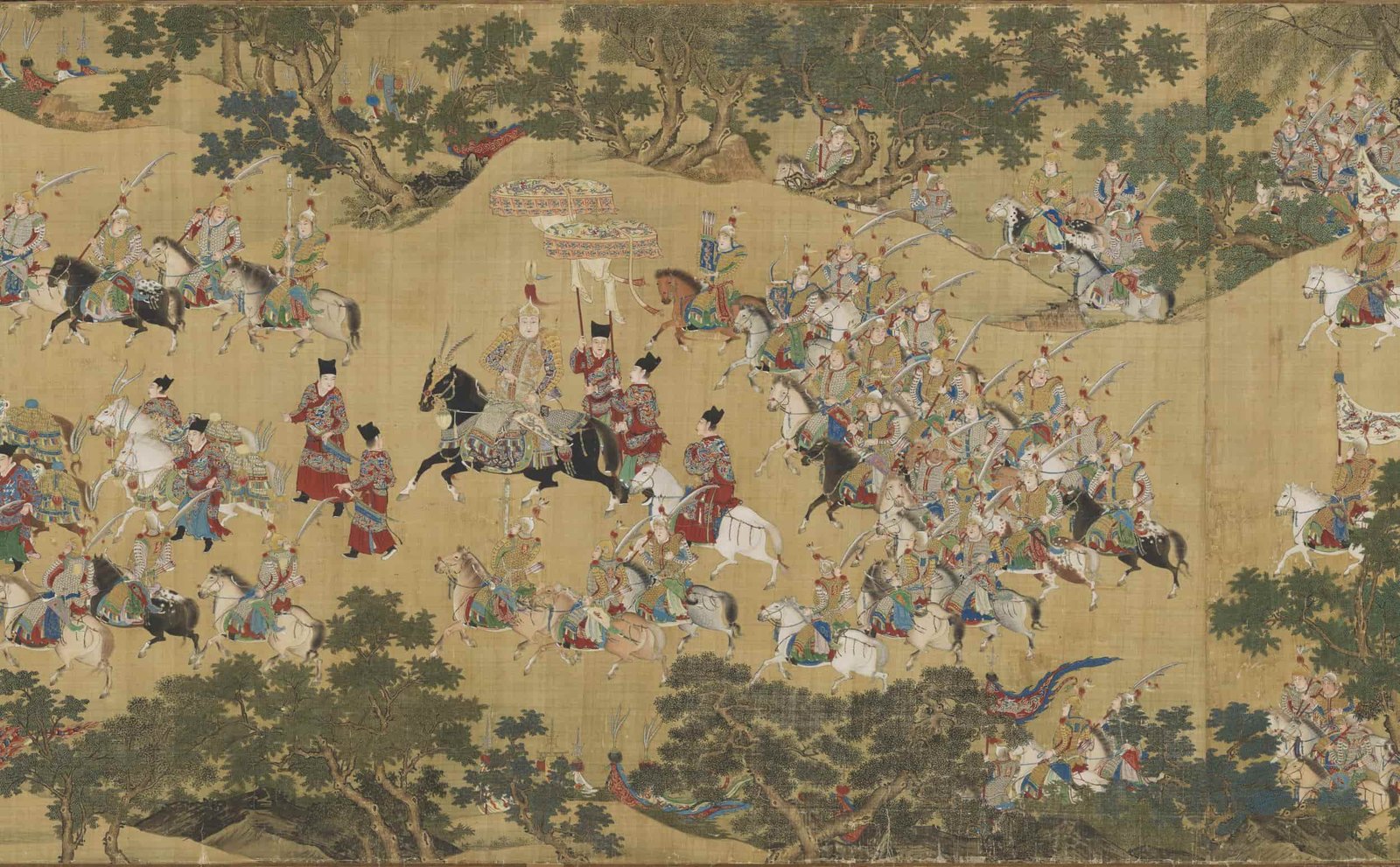
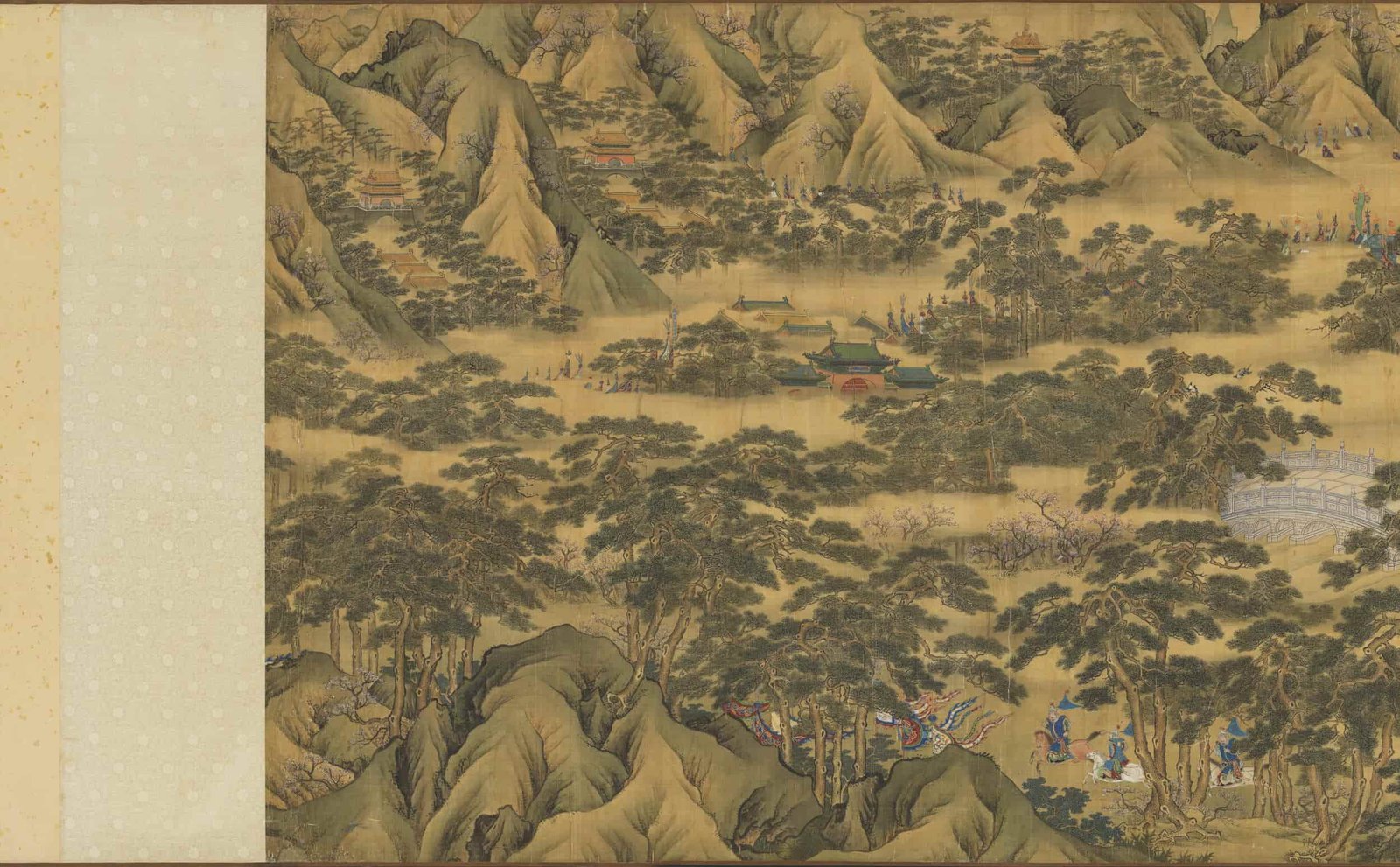
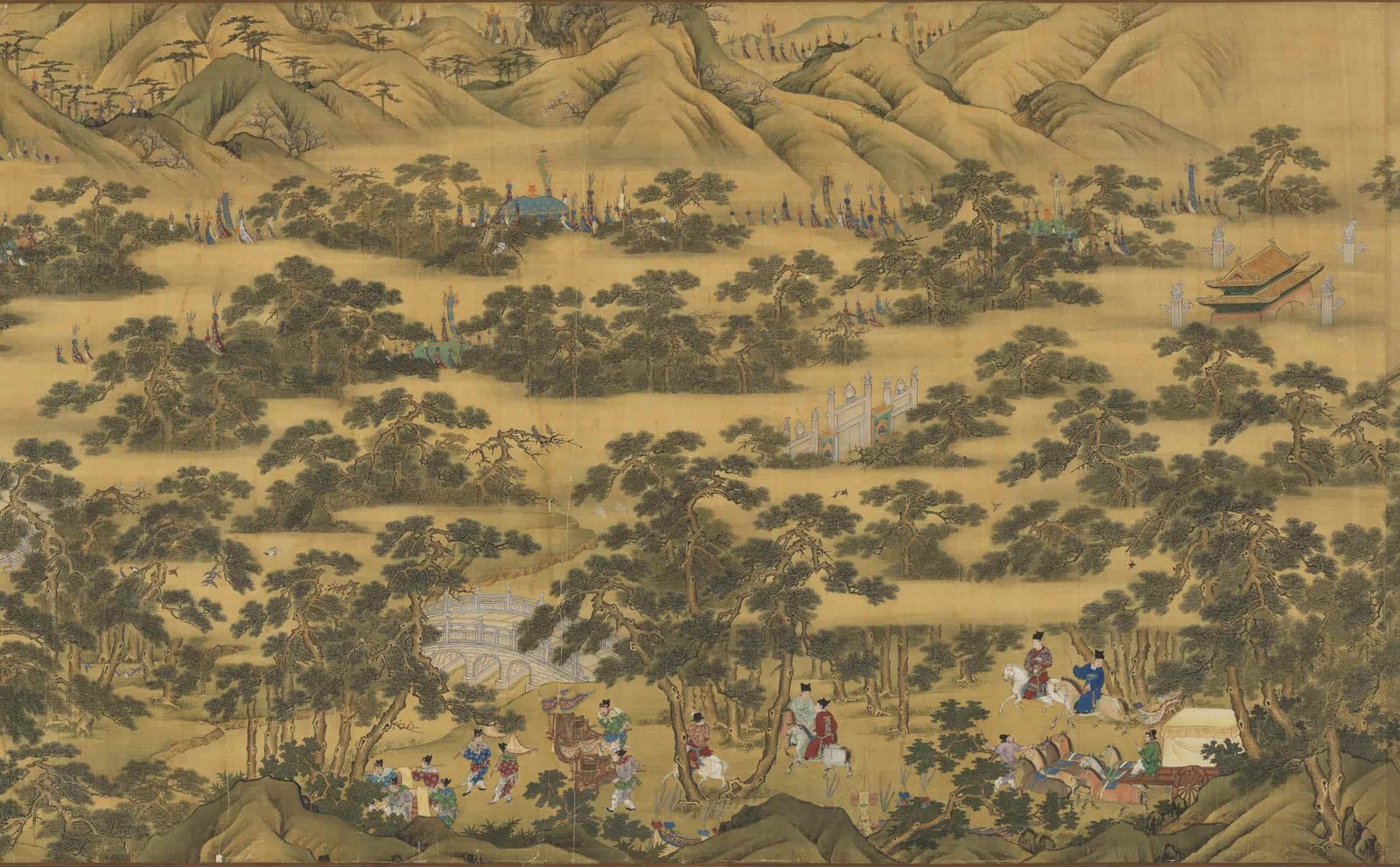
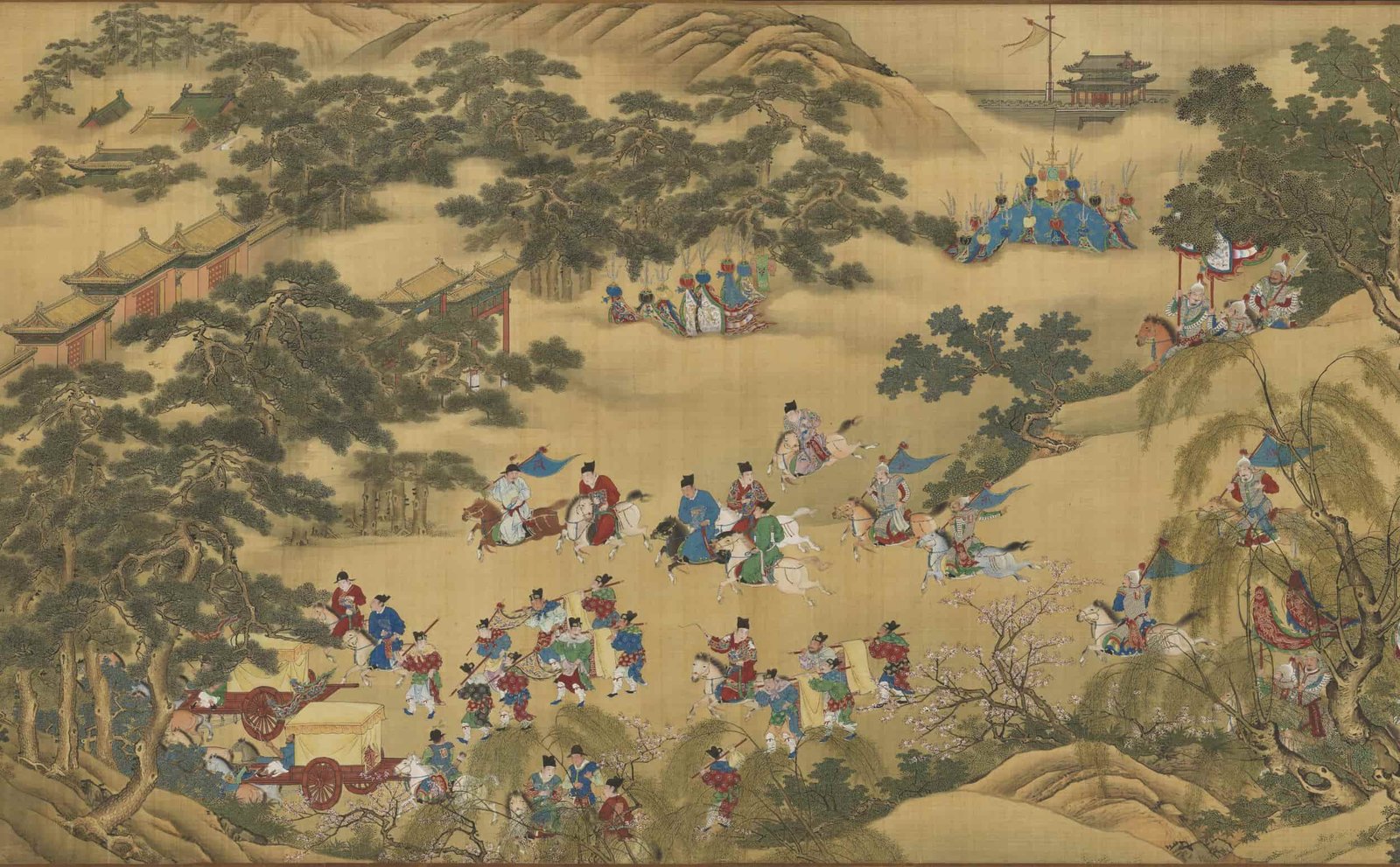
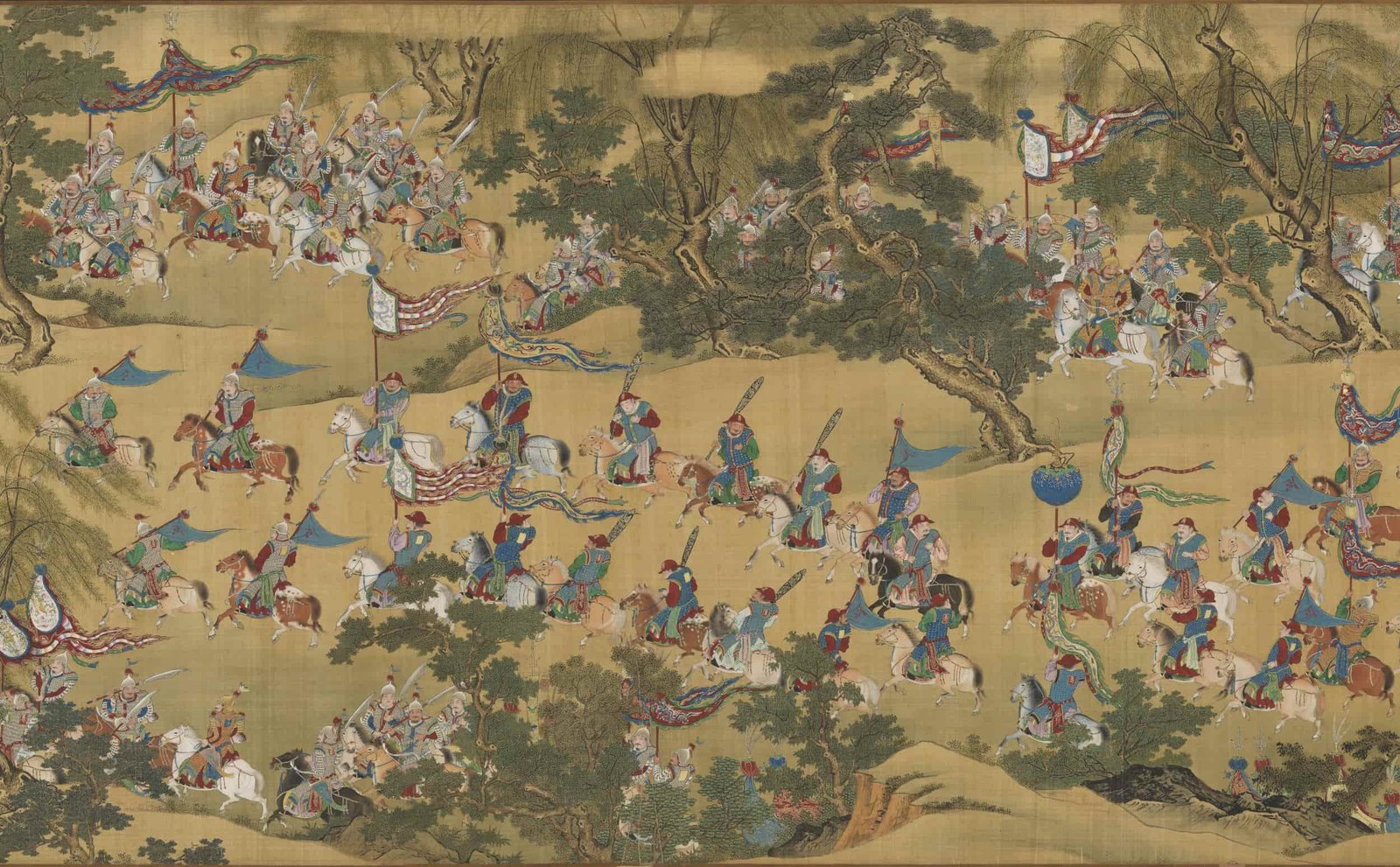
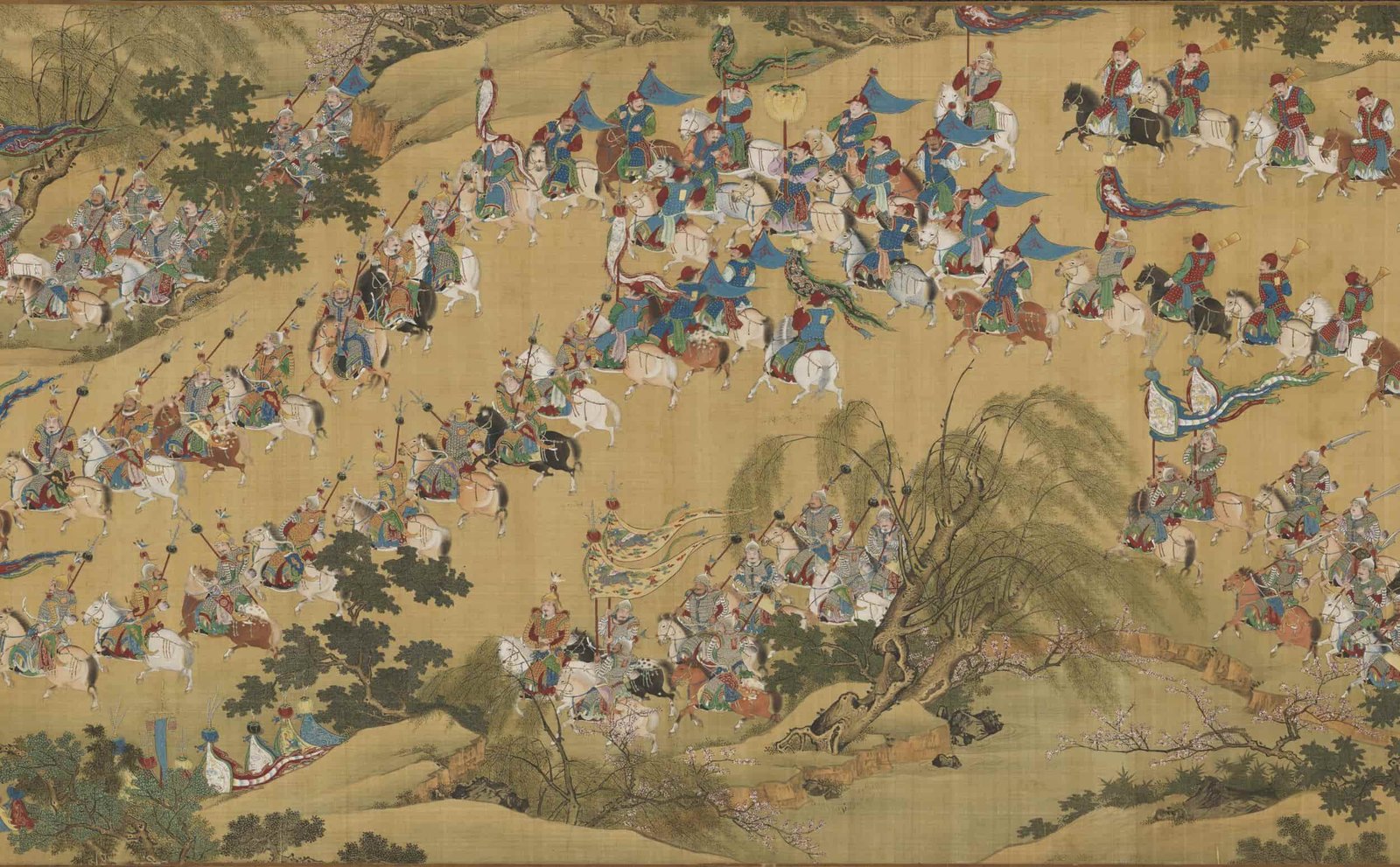
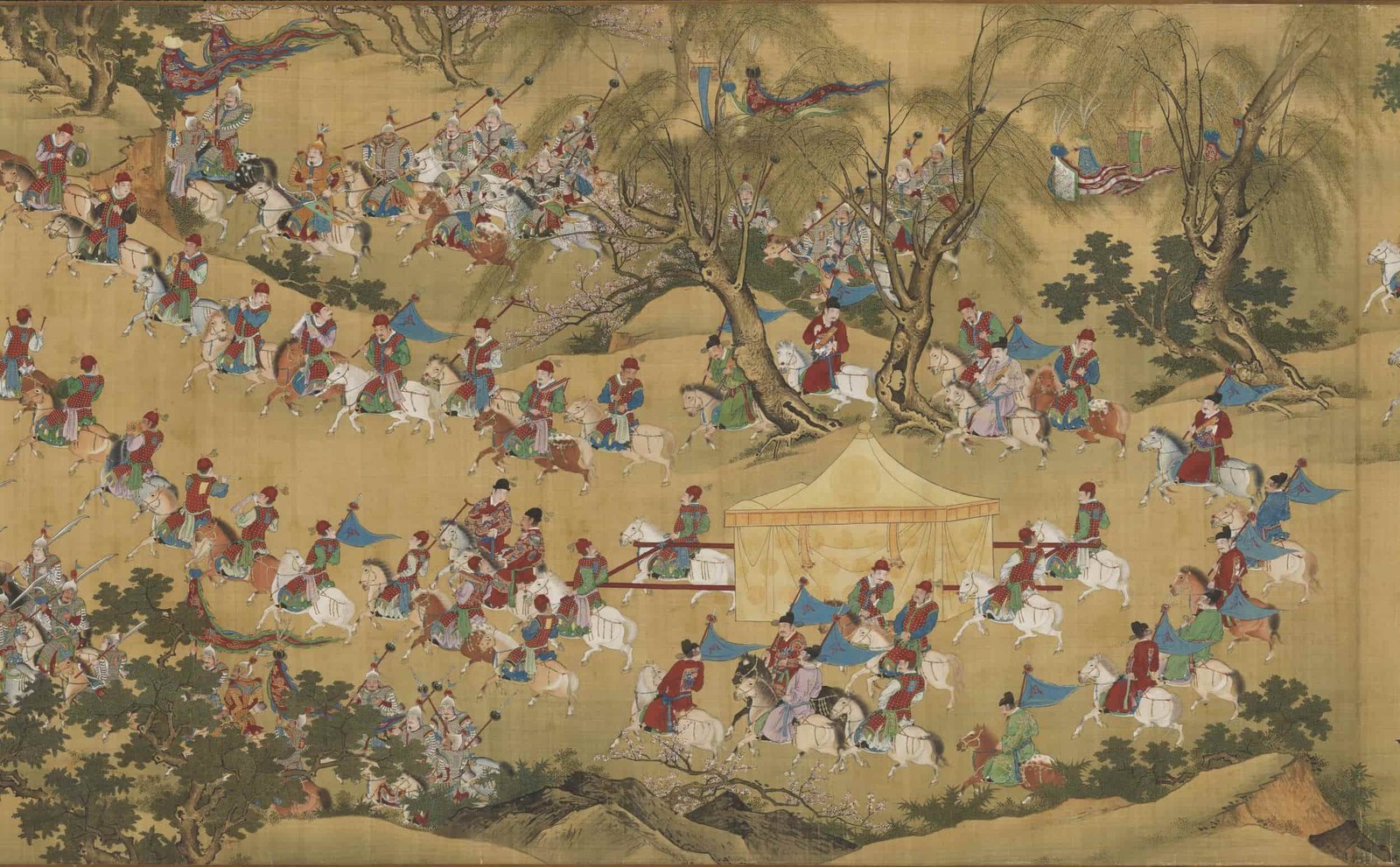
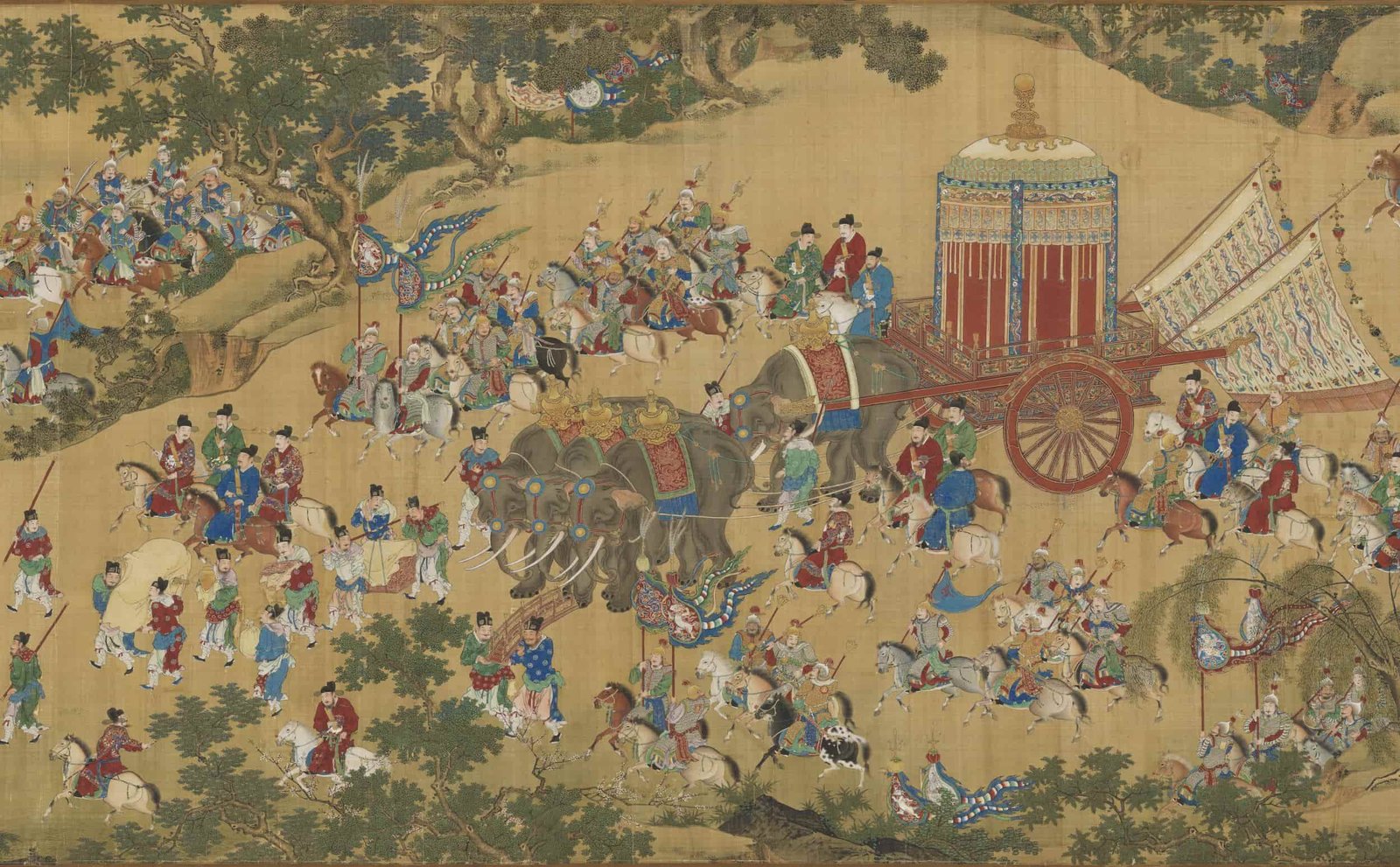
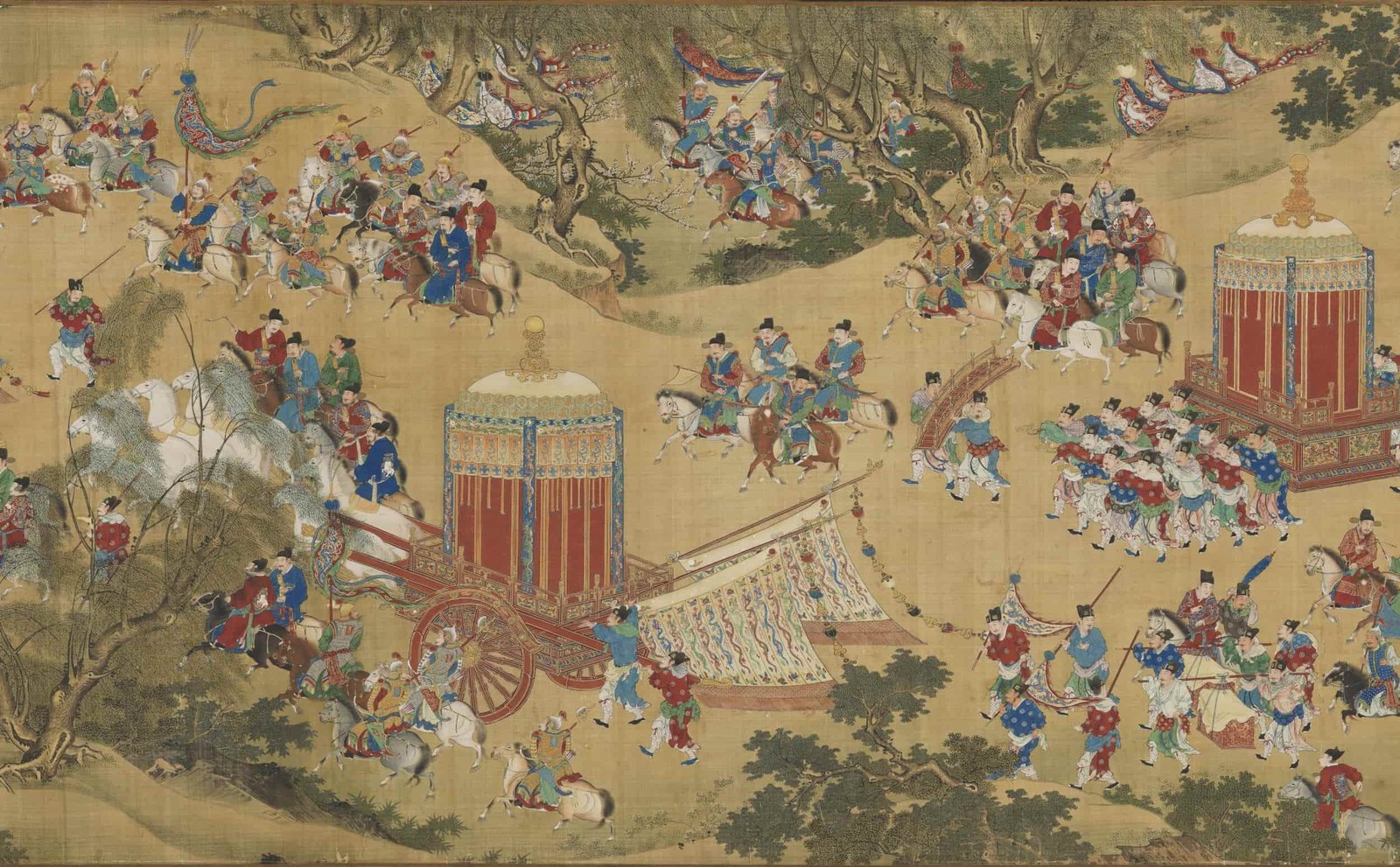
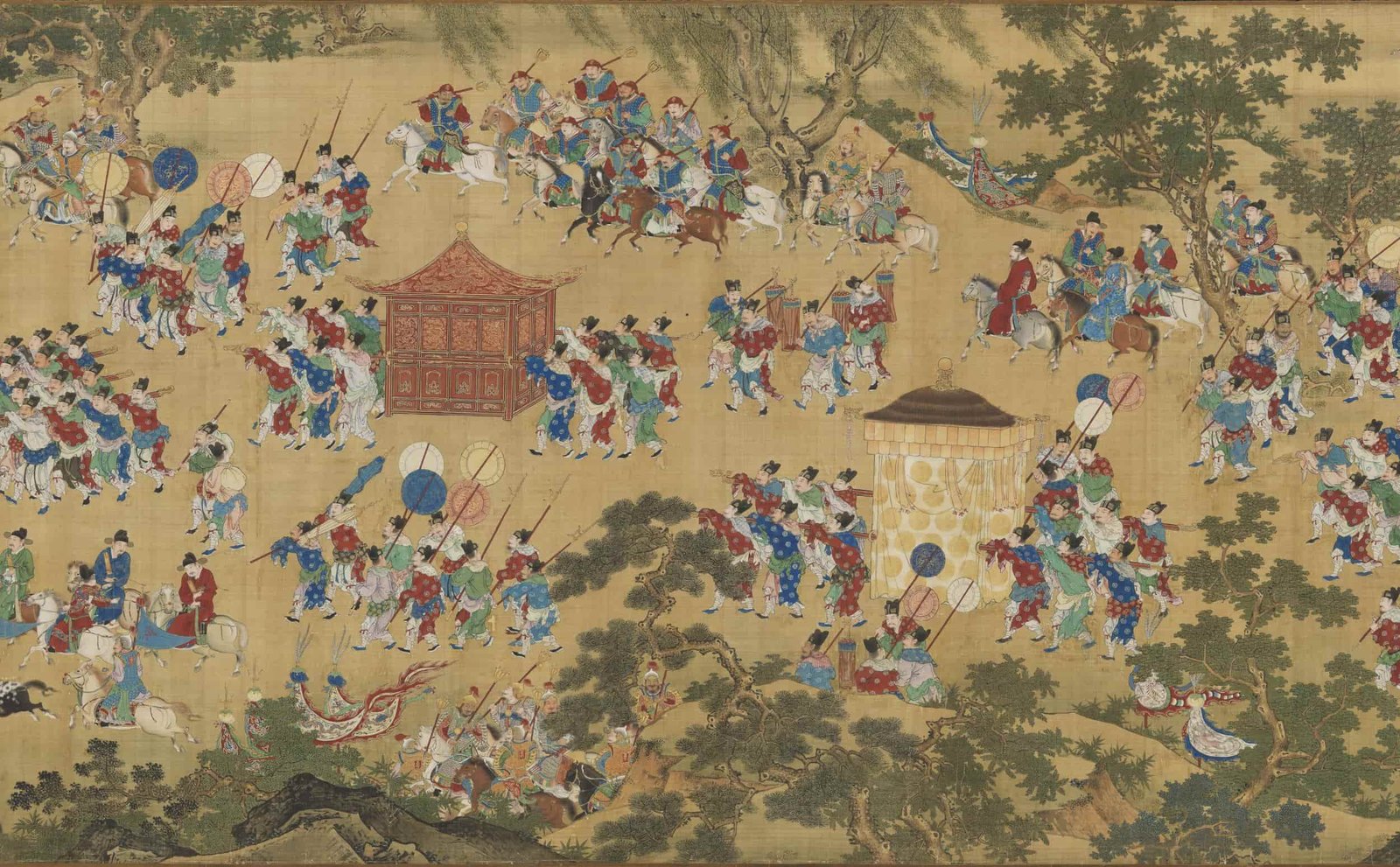
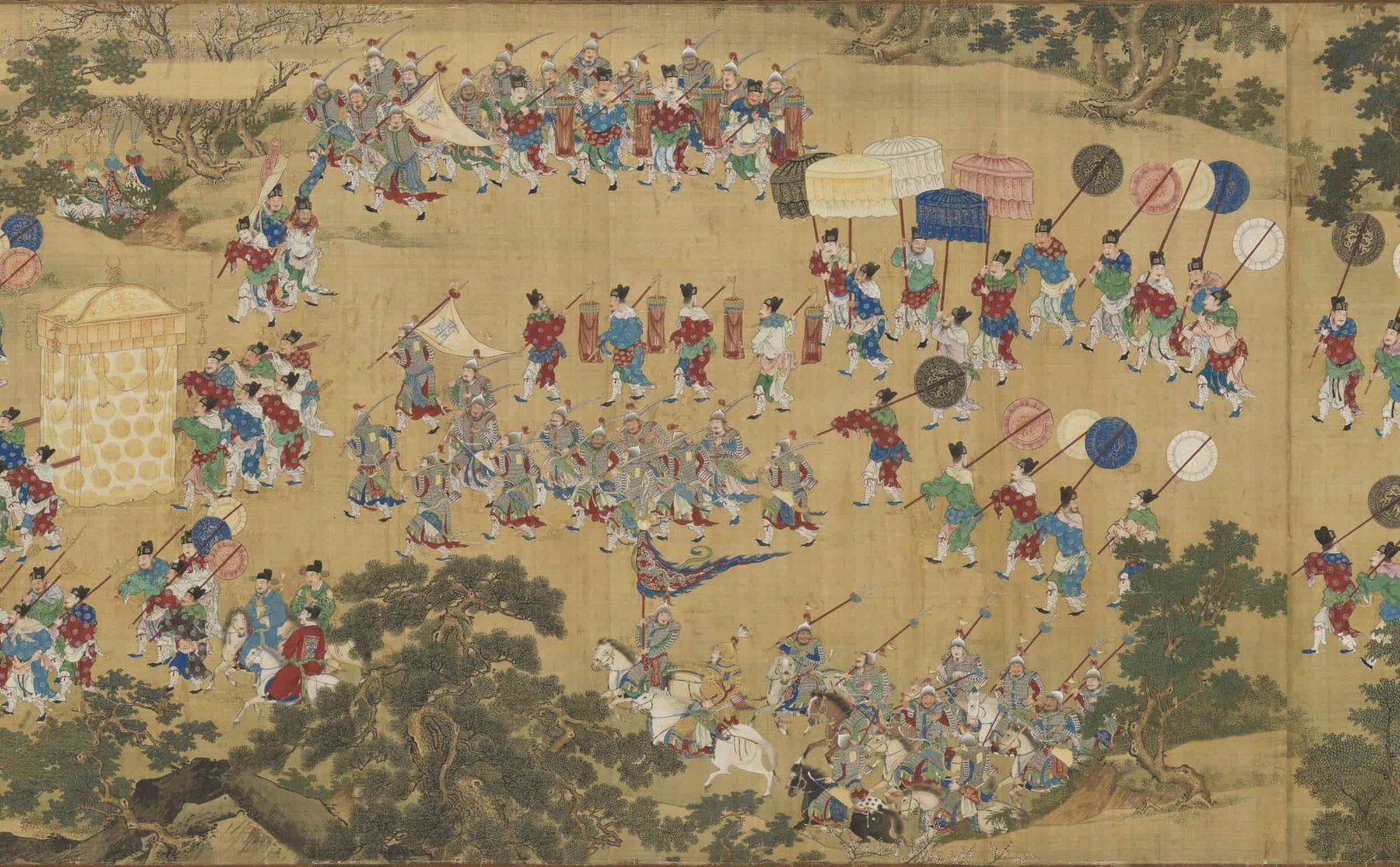
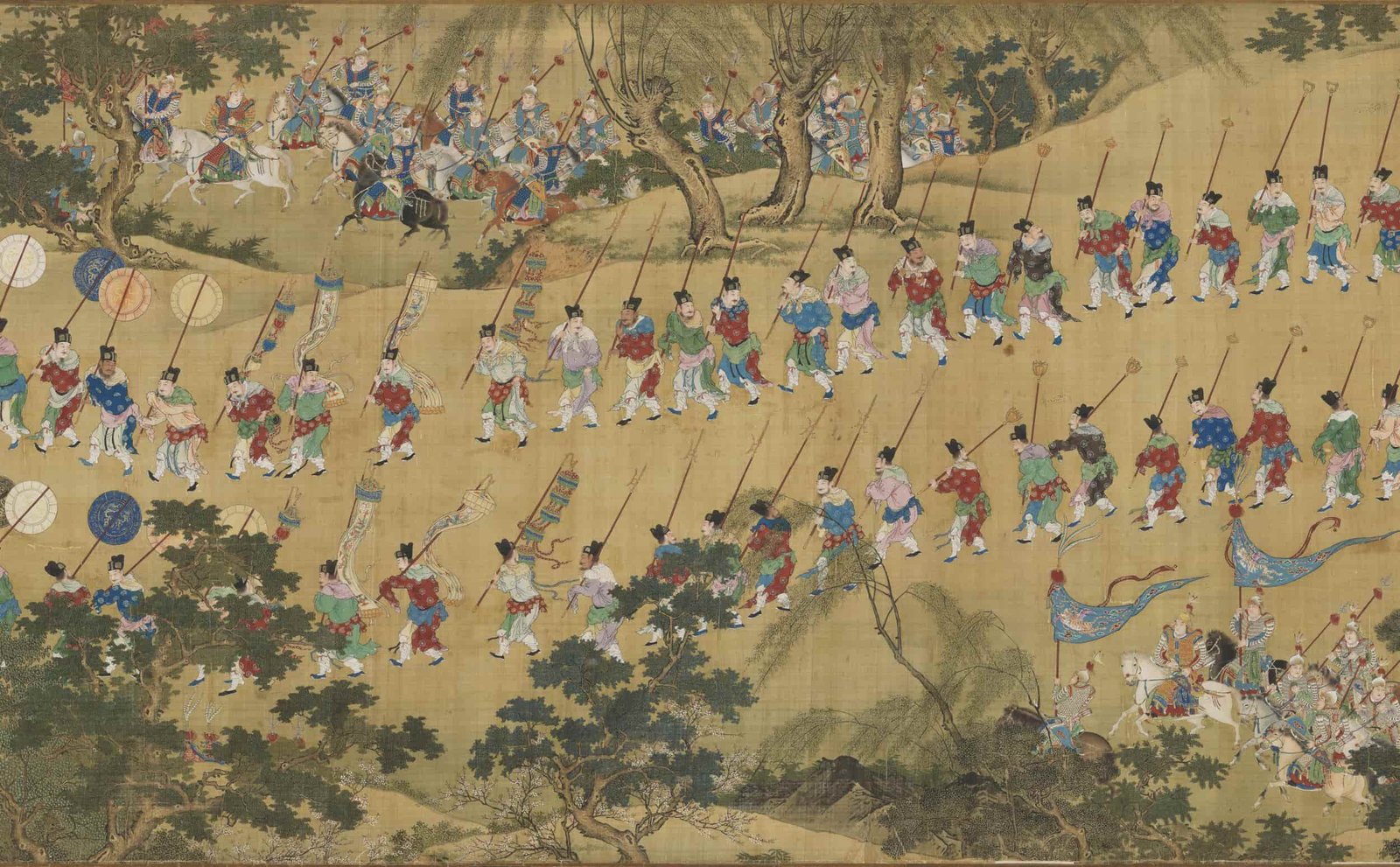
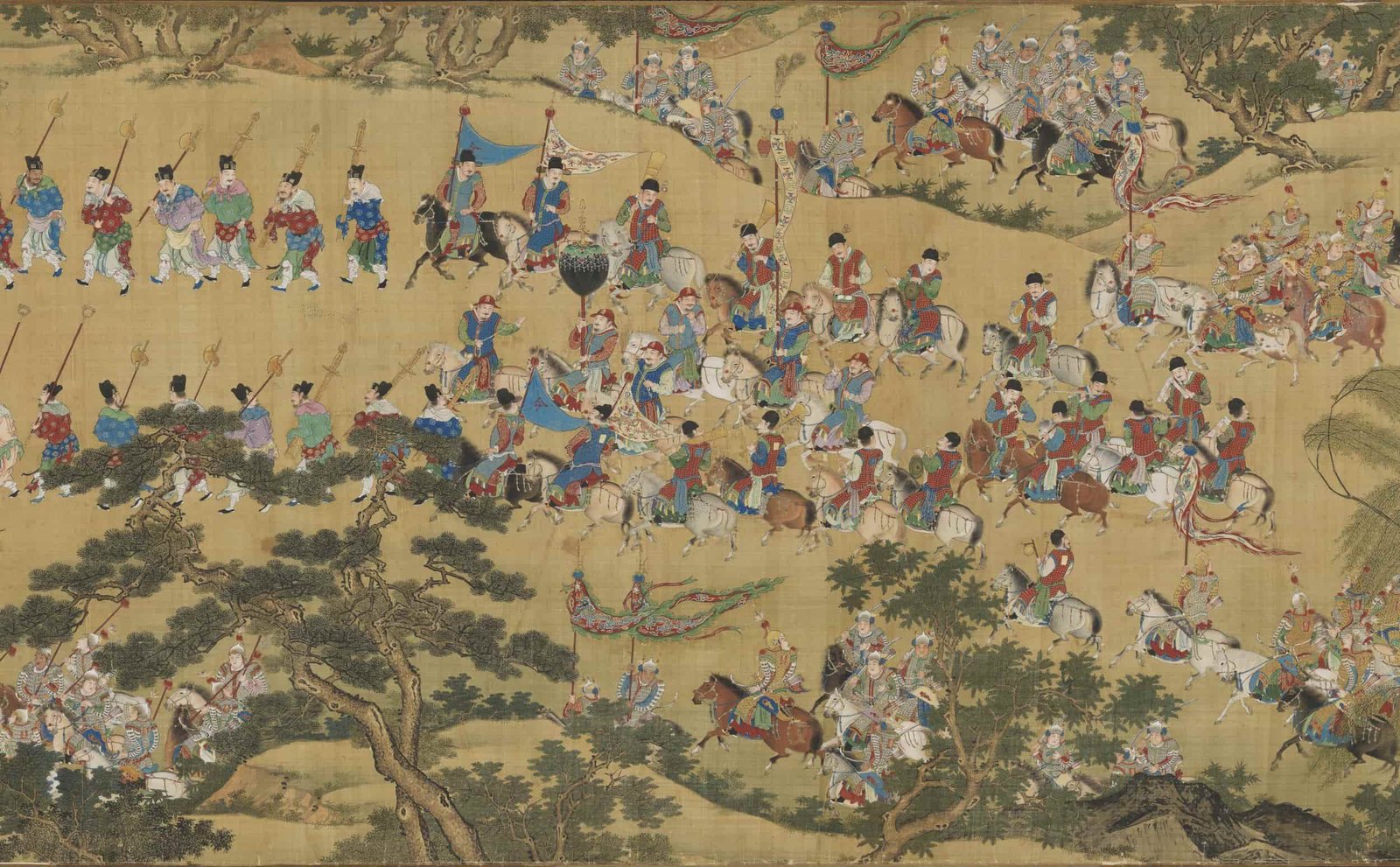
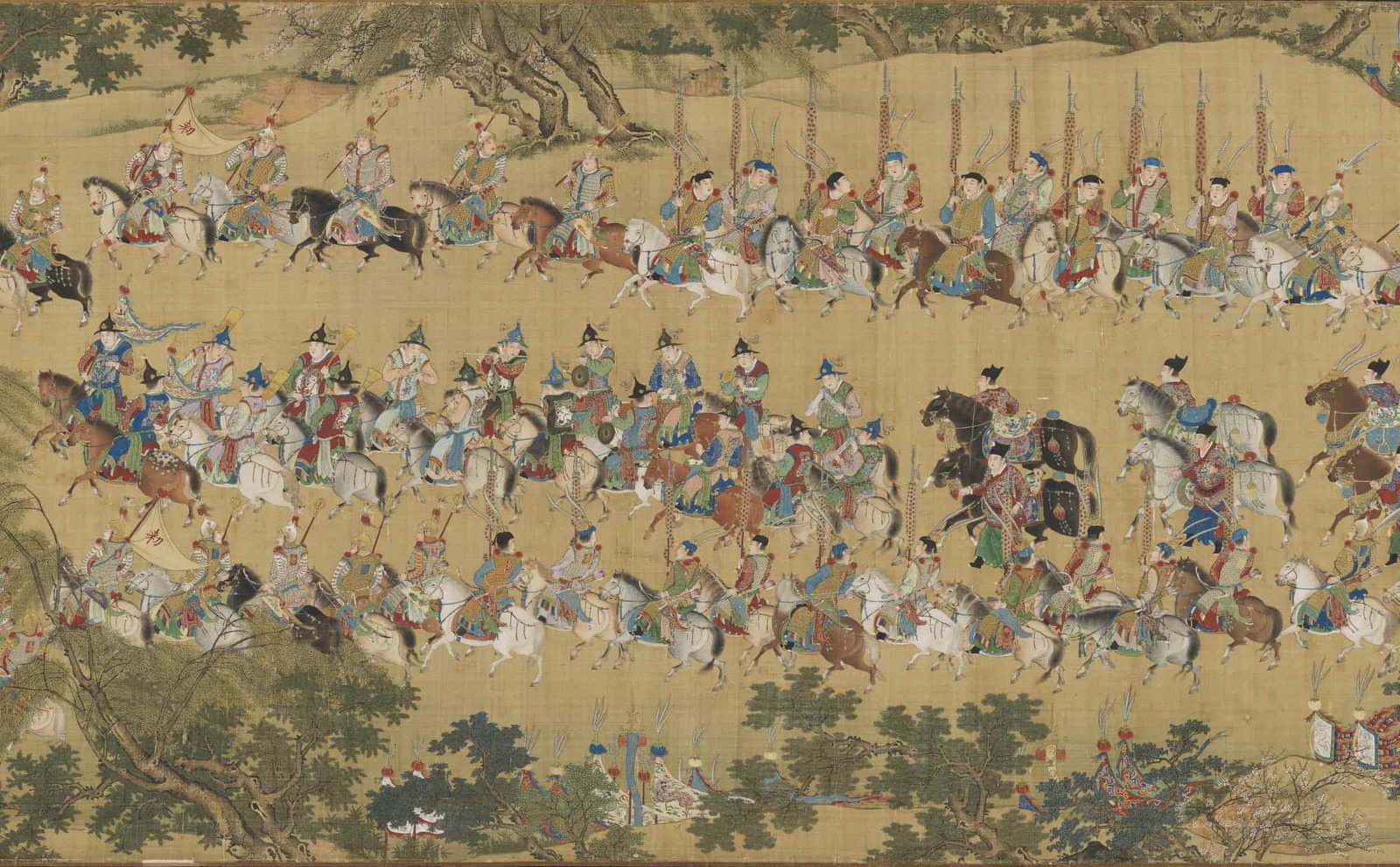
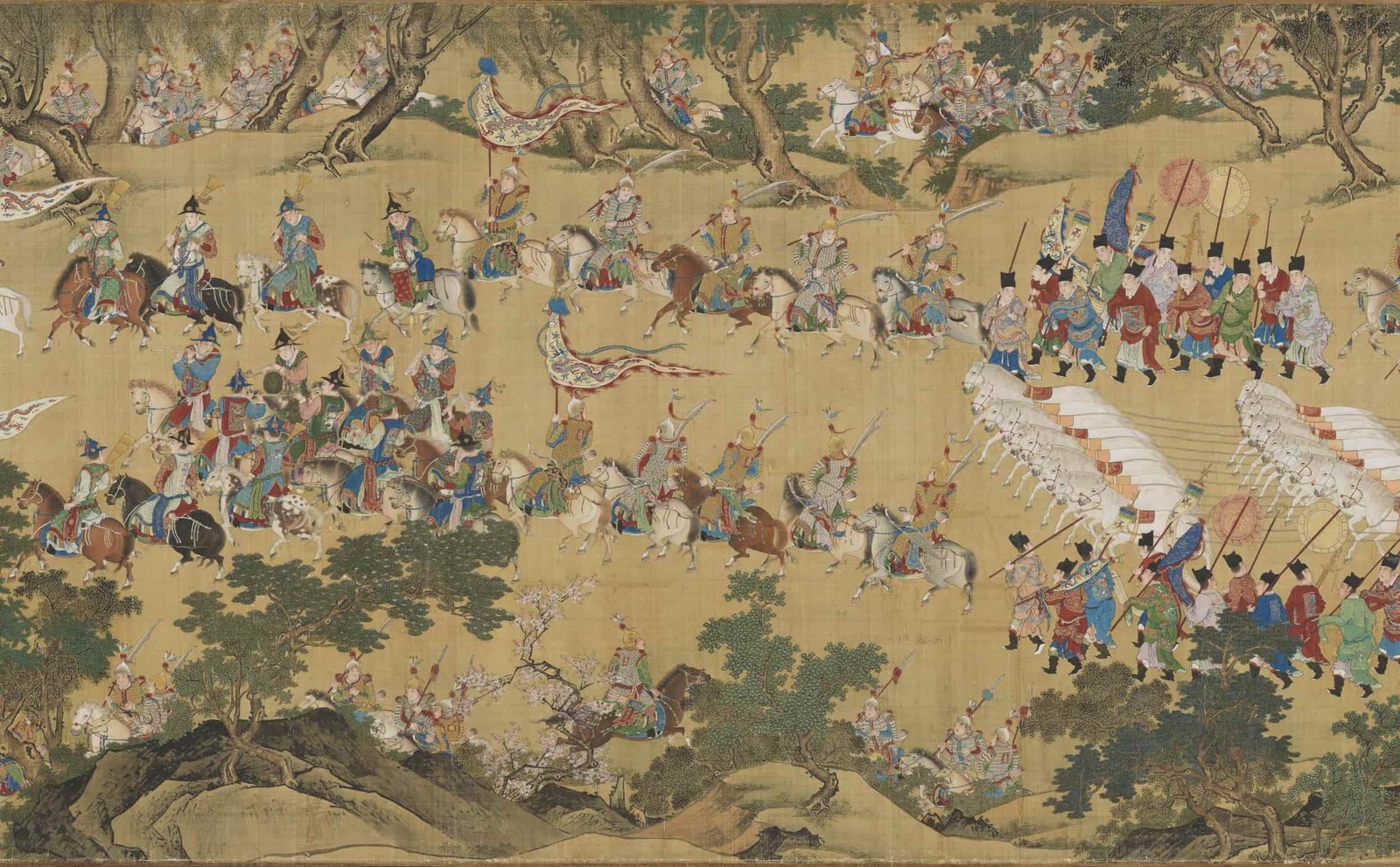
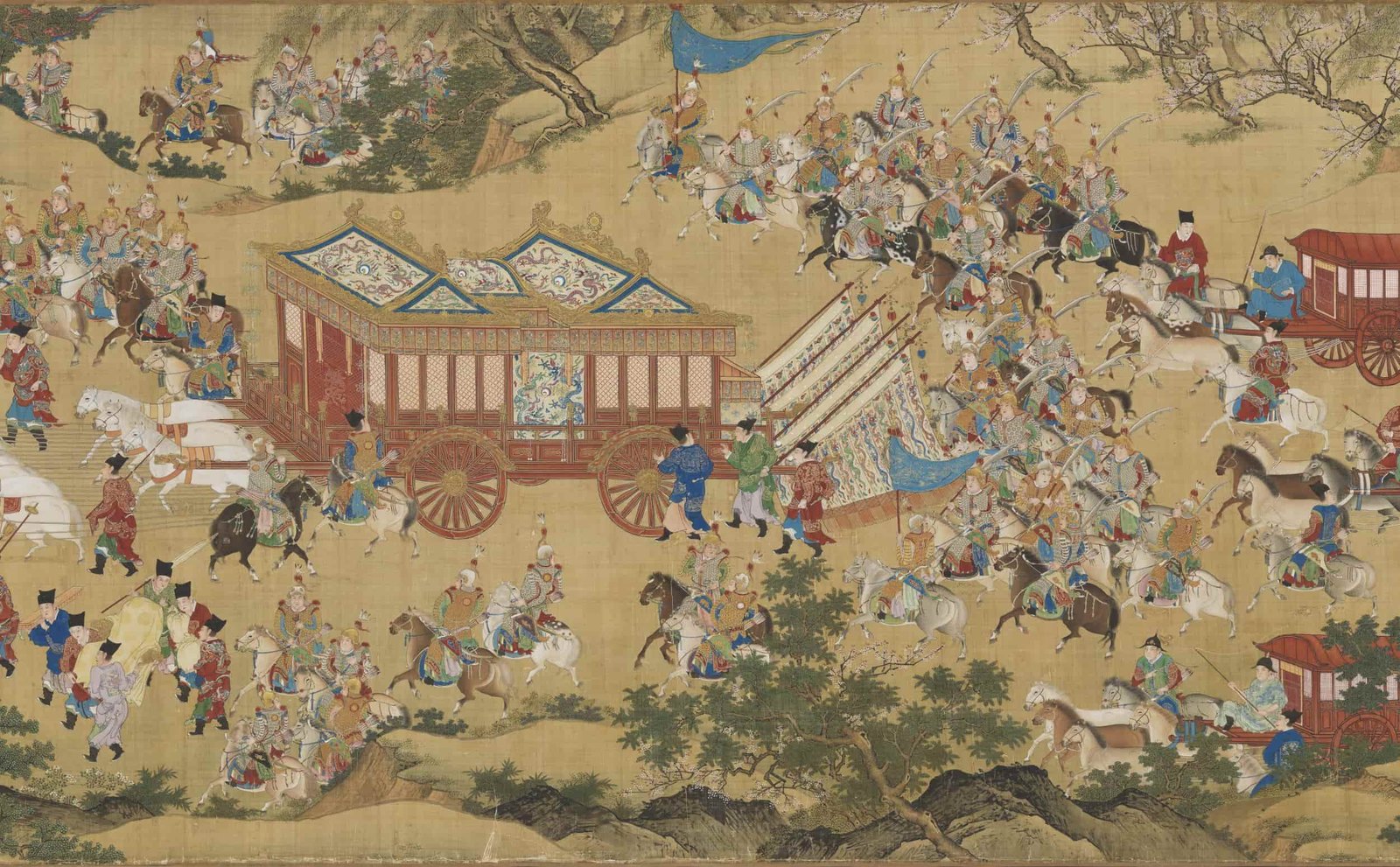
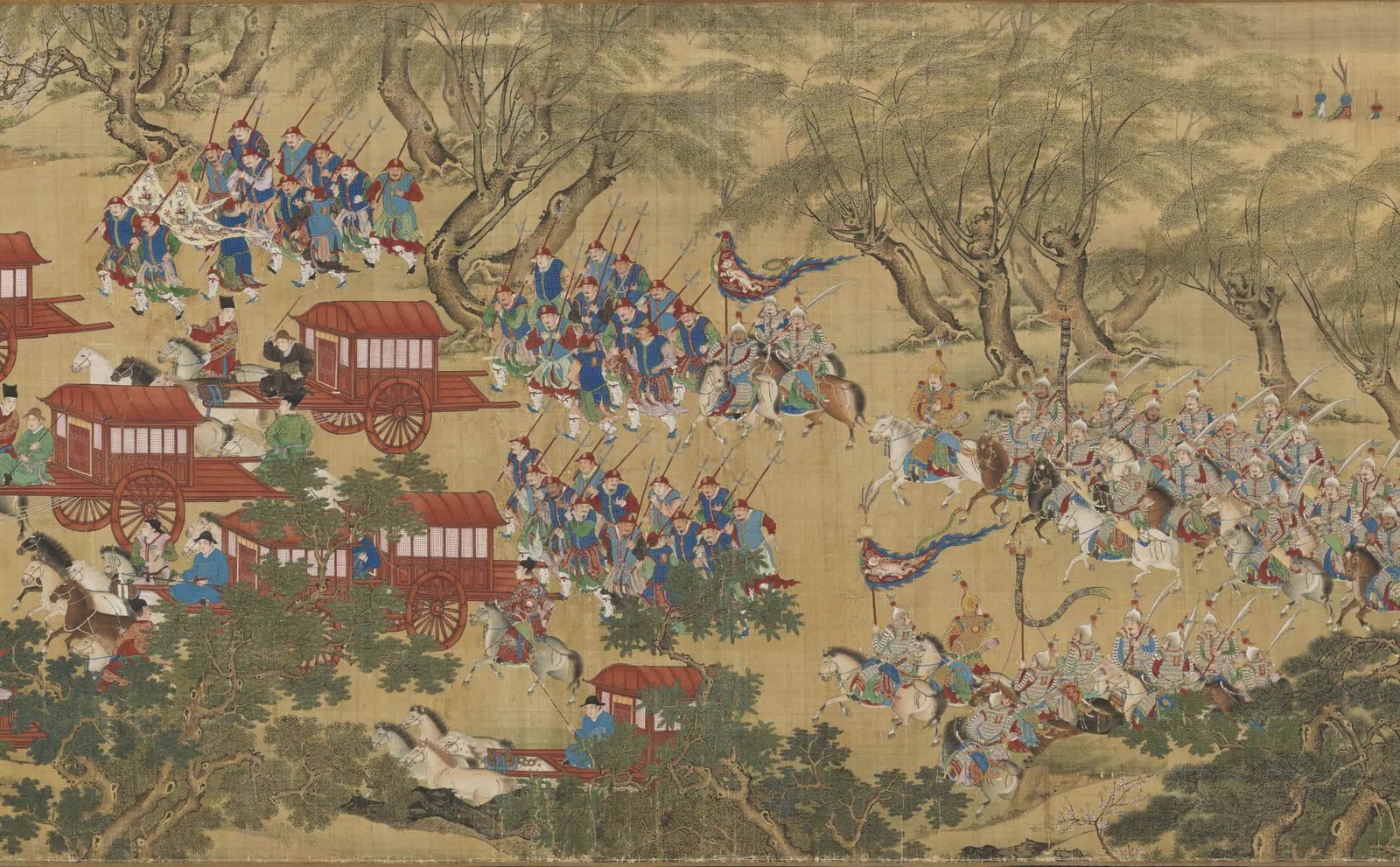
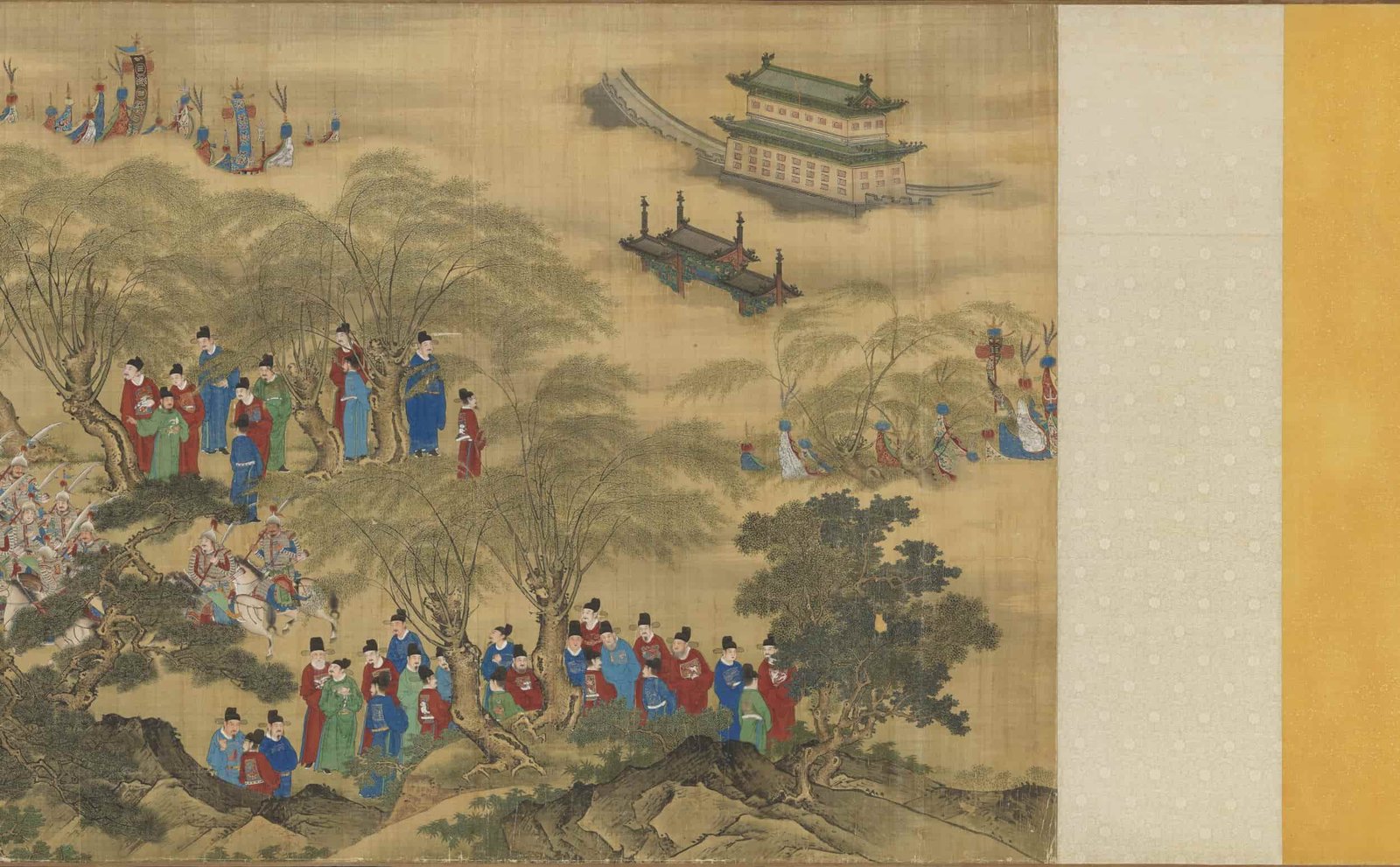
评价
目前还没有评价